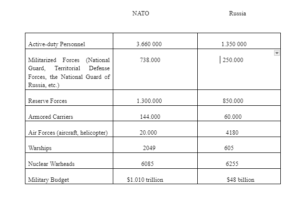
Prospects of arms supply to Ukraine and Western interests
The U.S. government plans to supply F16 multirole fighters, anti-radar missiles, SMArt artillery rounds and other types of weapons and ammunition to Ukraine. This aid package will be worth $61 billion; it has been brought before Congress. According to the U.S. government, the Armed Forces of Ukraine are facing a serious shortage of weapons and are unable to respond adequately to Russian attacks along the front.
To remind, in the recent past, Western countries provided Ukraine with aid worth billions of dollars; the aid package included several hundred units of armored carriers, artillery means and Soviet-made MiG-29 fighters, left in Eastern European countries. However, this aid did not come as a breakthrough; in fact, it produced only short-term results. Soon, the Russian side recovered its losses and even made a slight advance on the front. Despite these conflicting results, various U.S. and EU state officials, including U.S. President Joe Biden, as well as a large part of Western think-tank researchers, believe that the provision of continued aid and funding to Ukraine can make a breakthrough in the Russian-Ukrainian conflict, and, ultimately, lead to the defeat of Russia and the restoration of the territorial integrity of Ukraine. Thus, according to the researchers of the Carnegie Russia Eurasia Center, the Ukrainian war has, in no way, come to a dead end. As they state, a developed and more effective financing model will allow Ukraine freedom of action and an ability to speak with Russia from a position of strength, which will eventually force Russia to go to peace. Thus, it should be noted that the opinions expressed by both Western officials and think tanks are too bigoted, especially when they say that Ukraine can win the war. Russia inherited a huge amount of military equipment from the Soviet Union, which had been accumulated during the “Cold War”. Besides, Russia has a military industry, which, after that of the U.S., is considered the second best in the world. Adding to this its human resource, which is four times larger than that of Ukraine, any assumption about the victory of the Ukrainian side becomes meaningless. It should also be noted that the Western efforts to isolate Russia have not proven effective enough; now, in response to the Western supplies to Ukraine, Russia receives military equipment from China, Iran and North Korea. In fact, it would be naive to think that the West does not take all of this into account. David Petraeus, a retired U.S. Army general and the former director of the Central Intelligence Agency, spoke about this in one of his interviews. He noted that even if Ukraine received all the aid packages planned, it would be next to impossible for it to overcome the Russian “Surovikin” defense line, which includes multilayer defense infrastructures.
According to a number of Western analysts, military aid is not going to ensure a complete victory for Ukraine. However, they say, it can isolate Russian aggression within the borders of Ukraine and force Russia to abandon its plans of further expansion into Europe. A brief analysis shows that this, as well, is a weak argument. Theoretically, if Russia expands the geography of its military operations, it will inevitably come to blows with NATO. The West, together with the U.S., has several times more military equipment, air force, finances and human resources than Russia. This is evidenced by the studies of a number of analytical centers and media outlets, such as Global Firepower, Daily Express, International Institute for Strategic Studies, etc. Having studied the analyses made by these think tanks, below we will present the average figures of the force ratio between Russia and NATO.
Thus, it is not reasonable to think that Russia would seek to expand territories at the expense of NATO or the EU. Balance of forces between Russia and the West can be seen only with regard to their nuclear capacity. However, it stands to reason that neither side will resort to it, as it would lead to mutual destruction. The reason why the West is arming Ukraine is not so much the victory of Ukraine’s so-called democracy against dictatorial Russia, or the localization of the conflict, as the very fact that a continued conflict can drain Russia. A Russia that has bled out and weakened, cannot remain a geopolitical pole. The calculation of the West is that a lasting war will lead to a change of power or will give rise to serious grievances in Russia. In both cases, a weakened Russia will have to make concessions when dealing with the West. In turn, the West, led by the U.S., can force Russia to abandon its ambitions of a superpower — as it once happened after the collapse of the Soviet Union — and to stop having any influence on changing the world order. Such developments will allow the U.S. and its allies to more effectively channel their efforts into isolating another geopolitical opponent of theirs: China.
The implementation of this strategy of the West and the U.S. will depend on three main circumstances: on how effectively Ukraine will use the aid that it receives, on how effectively Russia will mobilize its resources, and last but not least, on the outcomes of the U.S. presidential elections, as a result of which, the newly elected president may simply change the order of strategic priorities.
Ashot Barekyan



